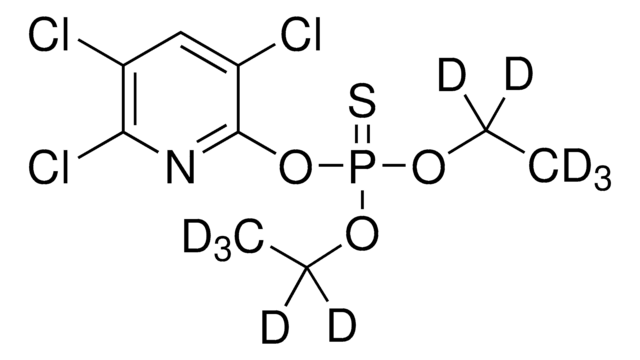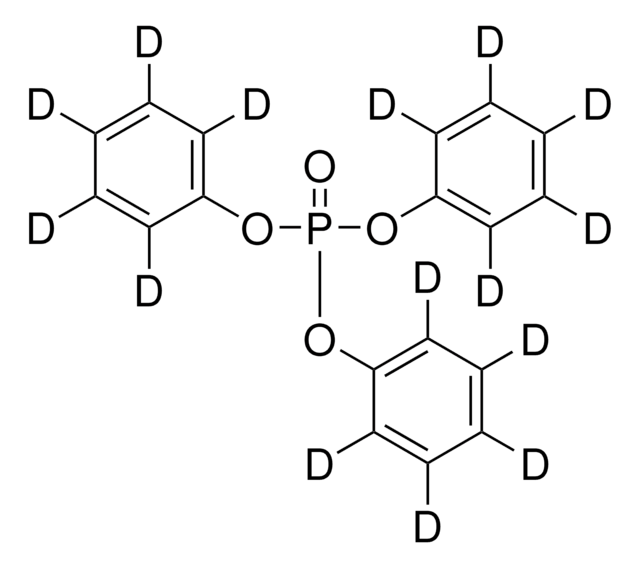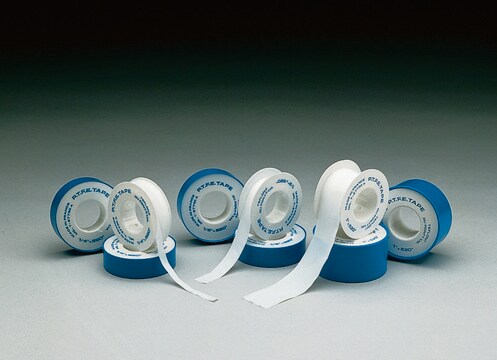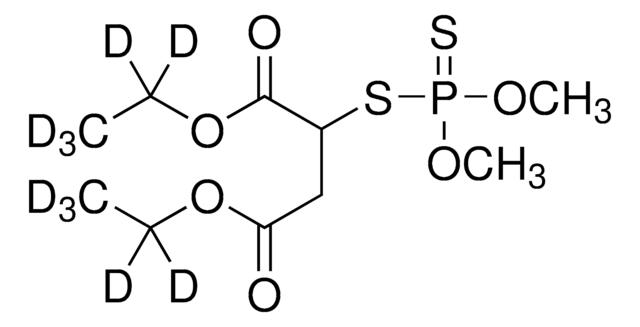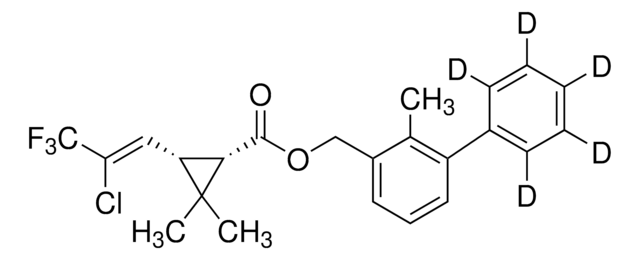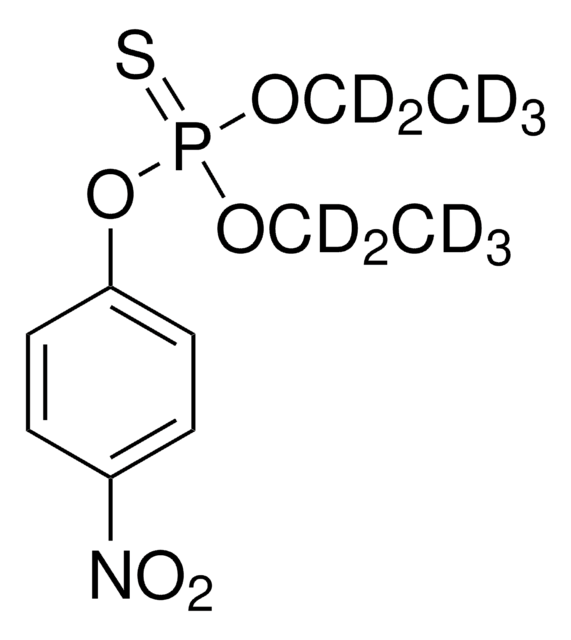492175
Diazinon-(diethyl-d10)
≥99 atom % D, ≥98% (CP)
About This Item
Productos recomendados
pureza isotópica
≥99 atom % D
Análisis
≥98% (CP)
índice de refracción
n20/D 1.4978 (lit.)
bp
83-84 °C/0.002 mmHg (lit.)
densidad
1.152 g/mL at 25 °C
aplicaciones
agriculture
environmental
cambio de masa
M+10
temp. de almacenamiento
2-8°C
cadena SMILES
[2H]C([2H])([2H])C([2H])([2H])OP(=S)(Oc1cc(C)nc(n1)C(C)C)OC([2H])([2H])C([2H])([2H])[2H]
InChI
1S/C12H21N2O3PS/c1-6-15-18(19,16-7-2)17-11-8-10(5)13-12(14-11)9(3)4/h8-9H,6-7H2,1-5H3/i1D3,2D3,6D2,7D2
Clave InChI
FHIVAFMUCKRCQO-HXOHQZFQSA-N
¿Está buscando productos similares? Visita Guía de comparación de productos
Aplicación
- In analytical methods for routine monitoring of residual pesticide.
- As an internal standard in GC–MS quantification of pesticides in food.
Envase
Palabra de señalización
Danger
Frases de peligro
Consejos de prudencia
Clasificaciones de peligro
Acute Tox. 3 Oral - Aquatic Acute 1 - Aquatic Chronic 1
Código de clase de almacenamiento
6.1C - Combustible acute toxic Cat.3 / toxic compounds or compounds which causing chronic effects
Clase de riesgo para el agua (WGK)
WGK 3
Punto de inflamabilidad (°F)
235.0 °F - closed cup
Punto de inflamabilidad (°C)
112.8 °C - closed cup
Elija entre una de las versiones más recientes:
¿Ya tiene este producto?
Encuentre la documentación para los productos que ha comprado recientemente en la Biblioteca de documentos.
Los clientes también vieron
Nuestro equipo de científicos tiene experiencia en todas las áreas de investigación: Ciencias de la vida, Ciencia de los materiales, Síntesis química, Cromatografía, Analítica y muchas otras.
Póngase en contacto con el Servicio técnico



